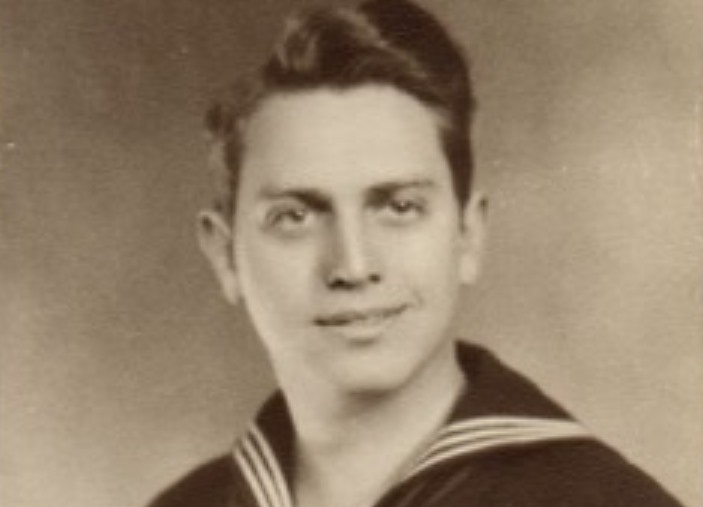When Don Franklin was a boy in Willmar, Minnesota, he rode in the basket of his uncle John E. Anderson’s bicycle. Now Franklin is 77 and living in Pittsburgh. He traded letters with his uncle for a while, until his uncle became the only casualty of German artillery that struck his ship off the shore of Normandy on June 6, 1944 – otherwise known as D-Day.
Anderson was 24 years old and working as a machinist’s mate in the Navy. When the ship was hit, he was alone in the boiler room and died instantly, according to the reports. At first, the family was told that his remains would stay overseas until the war was over. Later, they were told that his remains washed out to sea.
Last year, after investigating for years and pushing both the French and U.S. governments, Franklin found his uncle. DNA testing confirmed that Anderson had been buried in an unmarked grave in France.
Franklin said that he is joyful at bringing closure for the family after 70 years of uncertainty. Anderson was the only son and the youngest child of Oscar and Anna Anderson, Swedish immigrants who settled in Willmar. “My grandfather never really recovered and had what they called “an emotional heart attack,” Franklin said. “It altered the course of his life.”
Anderson’s remains will be returned to the States and buried next to his parents in Willmar. Franklin will be there for the ceremony. Anderson was posthumously awarded the Purple Heart. Now, he’ll get the military farewell he never received.
As documents about that day became public, a pair of amateur military researchers took on the mission of identifying unknown soldiers from World War II. In 2009, they let Franklin know that grave X-91 in the American Cemetery in Normandy contained the remains from the boiler room from LCT-30, Anderson’s ship.
The process would continue for years. Franklin needed permission from the French to disinter the remains and cooperation from the U.S. government to test the DNA. In the beginning, Franklin was skeptical while his mother, Anderson’s oldest sister, was not enthusiastic. “It became sort of a mystery, sort of a puzzle,” he said. In 2011, the family was able to convince Franklin’s mother to provide a DNA sample. She died shortly after at the age of 97.
U.S. Senator Amy Klobuchar helped in the pursuit of identification. She personally sent a letter to the Department of Defense. “This is a family that would not give up,” Klobuchar said. She added that those who lost their lives in war deserve respect from the rest of us.
Jon Lindstrand, a 36-year-old Willmar man who’s had an obsession with war memorabilia and history, felt a kinship with Anderson. He assisted Franklin with the search for Anderson’s remains. When Lindstrand read an article in the Willmar paper in 2009 about the possibility of Anderson’s remains being identified, he called the reporter. He offered to give Anderson’s family clippings from his collection about the sailor. Three years later, Franklin reached out to Lindstrand. He was hitting a wall in trying to get the Navy to test the remains in the unmarked grave.
Lindstrand “dug a little deeper” but he was also turned down. Eventually, he was able to obtain the military’s “after action report”, which is an account of what happened, from the family of the captain of Anderson’s ship. The report, which included photographs, showed that Anderson’s remains were recovered after the ship was hit.
Last year, Lindstrand and Franklin asked the Department of Defense to test the remains from the grave in France. At this point, Klobuchar stepped in. “We believed in them,” she said. “They cared so much about finding out about [Franklin’s] late uncle.” Naval officers came to Franklin’s house with photos of the remains and the samples they used to extract the DNA. Currently, Anderson’s remains are in a DNA lab in Nebraska. They will be moved to Willmar next month.
Lindstrand said that, in a sense, Anderson had become a part of his family. “It’s kind of numbing,” he said about the return of Anderson’s remains. “It was an extreme honor to be involved in this.”
Anderson had graduated from Willmar High School in 1937. Before he enlisted in 1942, he worked in his father’s painting and decorating business.
Up to this point, a stone placed near his parents’ grave was his commemoration. Franklin said that they will now be getting him a proper headstone. Lindstrand said, “He’ll be returned to Willmar almost 72 years, to the day, after he died.”
